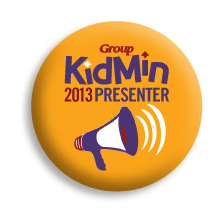
Have you ever been teaching a class or had a group where everything was going smoothly, and then all of a sudden, that child showed up, and everything fell apart? You know what I’m talking about. The frenzied, chaotic child who breezes into your group and brings the outside chaos inside. All of a sudden, bedlam and pandemonium reign.
Children of divorce live lives marked by chaos and disorder. There are so many things about divorce that can cause chaos that it is impossible to list them all, but they can include:
- Loss of the non-custodial parent
- Moving to a new home
- Going to a new school
- Financial difficulties
- Lack of rules and structure at home
- Increased responsibility
- Loss of rituals and routines
- Arguing parents
- Differing expectations
- Lack of planning
- Stepfamilies
- Lack of consistency
Many of these children live in chaos, and as a result, their brains are wired to be chaotic. They bring that chaos along with them wherever they go. To effectively minister to children of divorce, a children’s ministry leader needs to understand the chaos that marks their world and work hard at helping them understand what is expected of them.
The other day, I got a call from a person who was at a spring break camp. At her church, she is a DC4K (DivorceCare for Kids) leader. She said out of all these kids, she noticed one girl who just couldn’t sit still. She was moving all day long and all the time. And she was getting in trouble a lot. My friend looked at the little girl’s chart and saw that this little girl, whose parents were divorced, was living in a homeless shelter. Her life was filled with chaos from early in the morning until late at night.
As a DC4K leader, my friend knew some accommodations needed to be made for this child. Because this child’s brain thrived on chaos, she couldn’t just start sitting still and paying attention all of a sudden.
There are a number of factors that lead to this type of chaos. The first factor is that the children are generally living with exhausted, stressed single parents. This tends to lead to chaos in daily life. Secondly, many of these kids are bounced back and forth between two homes, latchkey care, grandparents, and other makeshift child care arrangements on a daily and a weekly basis.
Imagine at 6, 9, or 12 years of age having to keep track of
- Where you are supposed to be
- Who is picking you up from where and when
- All the items you will need at so-and-so’s house
- That your schoolwork for the next day is done when you have spent time after school in three different places
- That message that Mom had for Dad and
- Making sure it is delivered, and more and more and more!
What you can do
Routine and structure: Take into consideration the importance of a consistent weekly routine. Develop your regular routine, and then post it on the wall in several places. Encourage the kids to keep track of the routine by checking it occasionally throughout the class. The schedule becomes a routine they can count on to happen. Put another way, the routine becomes a structure that is dependable.
For seriously chaotic kids, I encourage you to make up a smaller individual version of your schedule, laminate it, and give it the children to carry around in their pocket or a chain around their neck.
Rituals: Kids in chaos need to be able to connect with the leaders through rituals. After several weeks, a dependable ritual, such as a handshake or fist bump, will help calm the chaotic feelings.
A ritual can feel calming under the skin. Rituals soothe the lower levels of the brain. A goodbye ritual at the end of a class gives kids closure on the session. Many kids don’t get closure in relationships as people come and go in their lives after divorce, so being able to depend on a goodbye ritual can also send them out into the world a little calmer and more in control.
Rooms: Disorganization on the outside can create or lead to disorganization and chaos in the mind. Supplies need to be organized in an orderly fashion. Decorations need to look organized, with not too many bright colors, shapes, or graphics.
De-stressing activities: Kids whose lives are full of chaos need ways to de-stress. These kids need to cross-lateral and cross-midline activities. Cross-lateral are movements that involve the arms and legs crossing the body i.e. right hand touching the left shoulder. Cross-midline refers to the skill of moving the hand, foot, leg, or arm, over an imaginary middle line that divides the body in two. This can be either horizontally or vertically, i.e. right elbow touching the left knee. This These activities can be accomplished by moving to praise music or children’s songs, or you can have the entire group stand, stretch, and breathe deeply.
Change the mindset: Leaders, teachers, and volunteers need to change their mindset about some of the children whose lives are filled with chaos.
When my friend who was observing the spring break camp approached the person in charge about this little girl, she was told, “1,500 other kids have figured it out. She can, too.” More than likely, this little girl can’t figure out what she is supposed to be doing because she is doing what is normal for her in her lifestyle. She needs someone to come alongside her and assist her.
While we can’t rewire the brains in chaotic kids in a one or two hours a week, we can expose them to a calm environment and show them ways to de-stress themselves and, in the long run, bring order and calm to their lives.
Calm, gentleness, perseverance, and the love of Christ in you will help bring a sense of order to your group and to the chaotic brains in your group.
This article is updated and adapted from an article originally published on the Kids & Divorce blog on March 26, 2014.
DC4K blogs posts are great to use for training children’s leaders and volunteers and they are free. Subscribe to the DC4K blog here.
Want to learn more about how to start a DivorceCare for Kids group for the hurting children in your community? Click here.
Did you know DC4K blog articles are on Pinterest? Divorce & Kids, Children’s Pastors, Single Parents, etc. It’s all there. Check it out here
Follow Linda on Twitter, dc4klinda










Thank you for this post. Children’s ministries workers need to learn practical tools to minister to these chaotic children.
We use Etch-A-Sketches, puzzles and color pages during class times. There is always an adult beside them. Rubbing a child’s back gently is another way to calm them down.
Engaging a child in a conversation about their life is a way to know what is behind their behavior. Like I always say, “Minister to the heart of a child and the behavior will change.” Just dealing with the behavior is not affective. Take the time to care and extend His arms to them. They didn’t do anything to deserve the chaos and trauma they are living.
Old methods of “sit still and listen” are just not effective for these damaged kids. Time to learn and adjust, children’s ministry leaders. They are counting on it.
.
Thanks Robyn.
Pingback: DC4K » Stress-busting tips for kids in divorce
Pingback: DC4K » With VBS coming up, attitudes and conversations can make a difference when you have a rambunctious group of kids
I always try to ID the ringleader as early on as I can and then make that person my helper right away. I call it “second in command” and since I teach high school I pitch it as a resume citation if they can hold on to the job for the entire semester. The student isn’t paid in the traditional sense but has a really great benefits package including free use of my refrigerator (our kids have vending machines and seniors can leave campus for lunch), a private drawer to keep things in, use of the good pencils and not the nasty loaner pencils, occasional Gatorade when I can afford them or other treats when the personal budget allows, a lockable shelf in my closet and so on. There is an application and interview process about two weeks into the start of the term. I have seen over the years that once the ringleader has a sense of this perceived “power,” the room runs much more smoothly. If that person is an athlete, then I require a coach recommendation — some times the kids think that they’re untouchable when they’re in season. i may require other recommendations if I know that the ringleader sees another teacher in a favorable light and we work together to make sure that student chills out in the other class too. I’ve been at the same school for a decade now and this has never failed me. And besides, it’s nice to not have to think about some of the things I don’t want to do anyway like writing the daily agenda on the board or passing out graded work.
Mary, sounds like you’ve got some positive classroom techniques going on. The kids in are blessed to be in your class.
Thank you very much. A big part of my tenure so far goes to the Love and Logic corporation. In all honesty, my second year at my school was unreal to the point where my contract was the only thing that kept me around. If it weren’t for Love and Logic, I’d have moved back in with Mother ages ago. Now, I’ve finished my tenth year and I have no intention of going ANYWHERE.